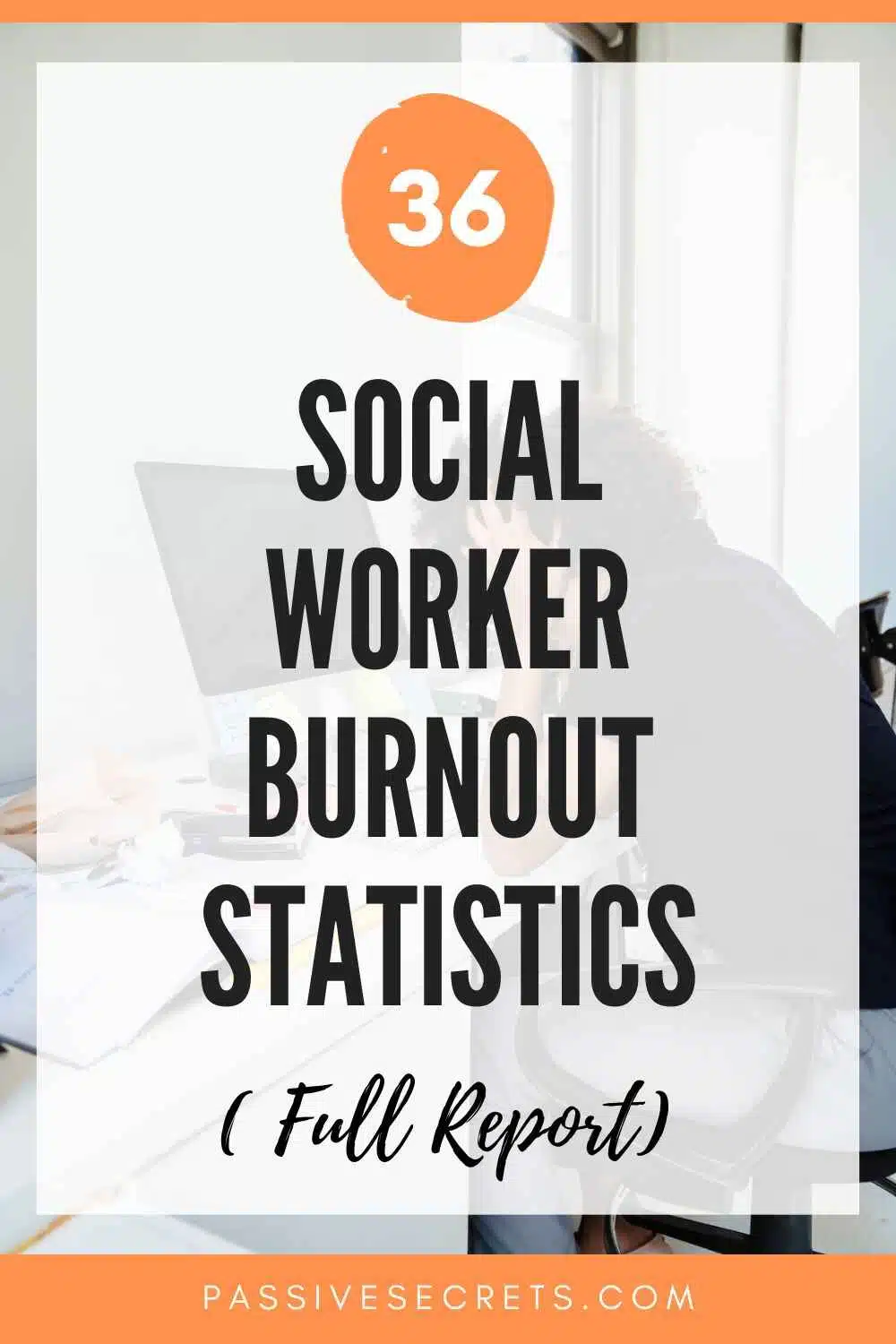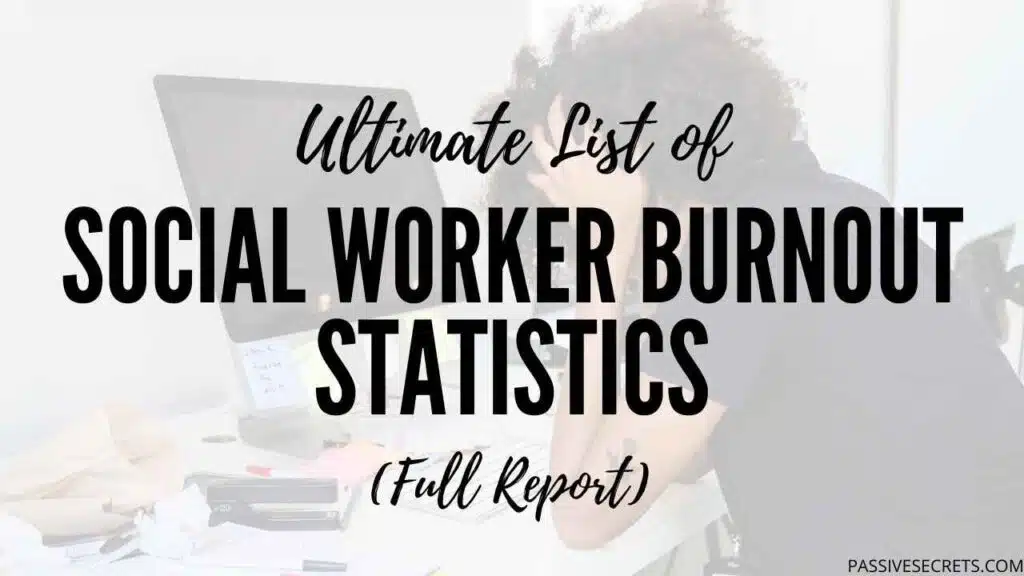
The world of social work can be very demanding. Yes, there is so much social workers do, especially in challenging periods like the Covid-19 pandemic.
Social workers are like everyday heroes, tackling challenging issues to help others and make communities better. But they are also vulnerable to high levels of burnout.
Due to the nature of their job, social workers are exposed to crises and emotional stress. Even worse, they have very little support and funding, all contributing to burnout.
For example, the Covid breakout happened a few years ago. However, many social workers are still in the process of healing from the trauma and stress they experienced.
These social worker burnout statistics share deeper insights into the state of the social work industry and how workers cope with burnout.
Social Worker Burnout Statistics You Should Know
1. 79.2% of social workers admitted to experiencing burnout or its symptoms in their current job. (source)
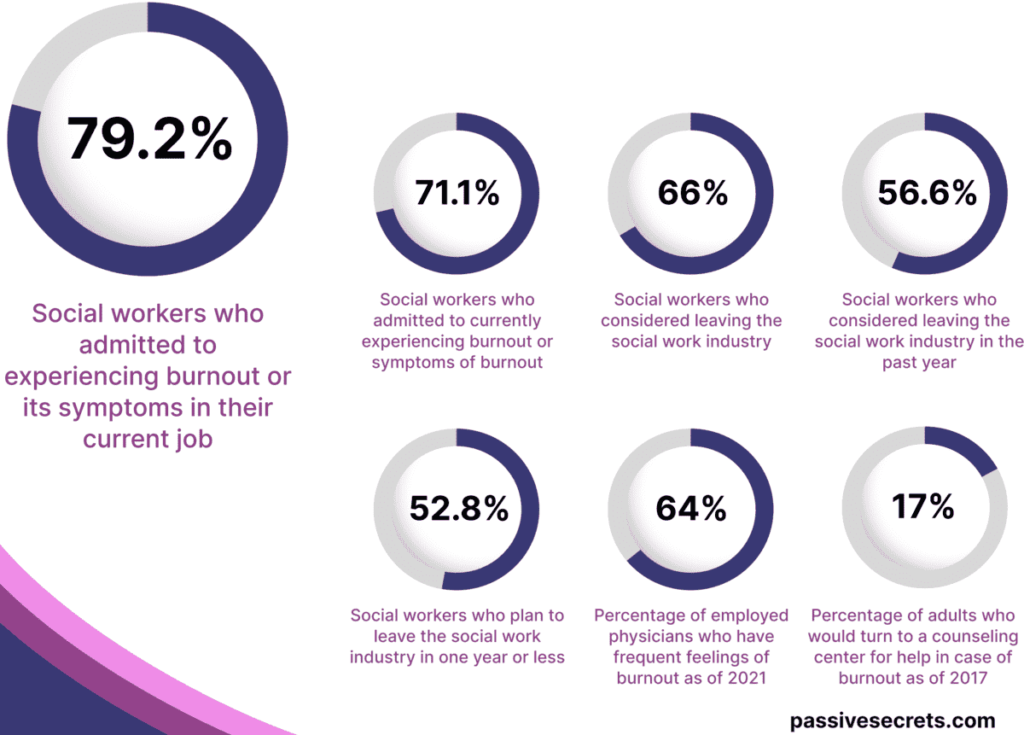
2. During the Covid-19 pandemic, 20.4% in Spain experienced burnout. A majority of them (70.1%) experienced emotional exhaustion. Furthermore, 48.5% and 36% experienced depersonalization and a reduced sense of personal accomplishment, respectively. (source)
3. However, in the U.S., the rate of social worker burnout in the pandemic was higher. 63.71% experienced burnout. 49.59% say they experienced secondary trauma. (source)
4. About half (50%) of child welfare social workers reported experiencing high levels of burnout, citing a lack of support and a significant cause. (source)
5. 71.1% of surveyed social workers say they are currently experiencing burnout at work. (source)
6. 66% of traditional schools say they have considered leaving the social work industry. (source)
7. 64.2% confirmed they feel less burnout at work when their peers recognize them. (source)
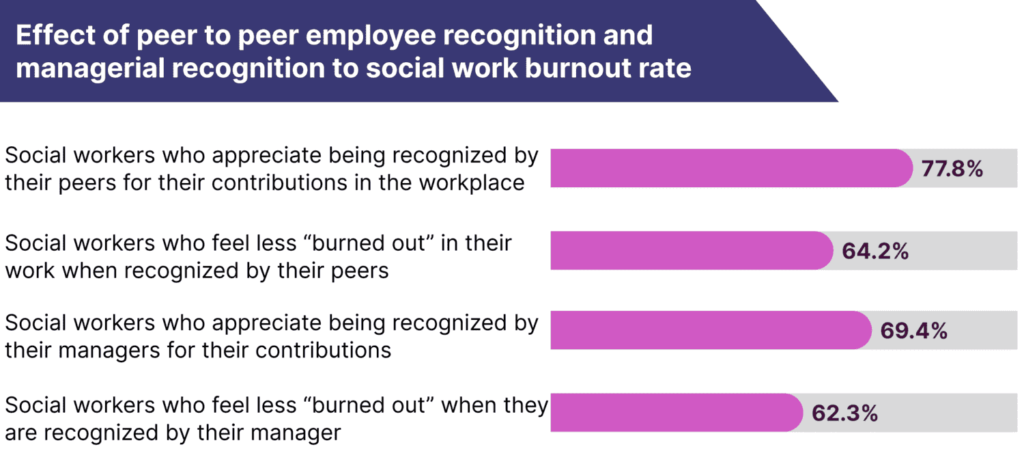
8. 91% of U.K. social workers felt moderate to high emotional exhaustion during the pandemic. (source)
9. Almost 60% of social workers in Singapore say they are affected by anxiety and depression. 50% experienced depression during the Covid-19 pandemic. (source)
10. Social workers in family service each handle up to 22 on average. (source)
11. As of 2019, the food services and hospitality industry had the highest burnout rate globally. Up to 80% of workers in that industry say the workload was overwhelming. The medical and healthcare industry also had a high rate (76%) of employees who experienced burnout. (source)
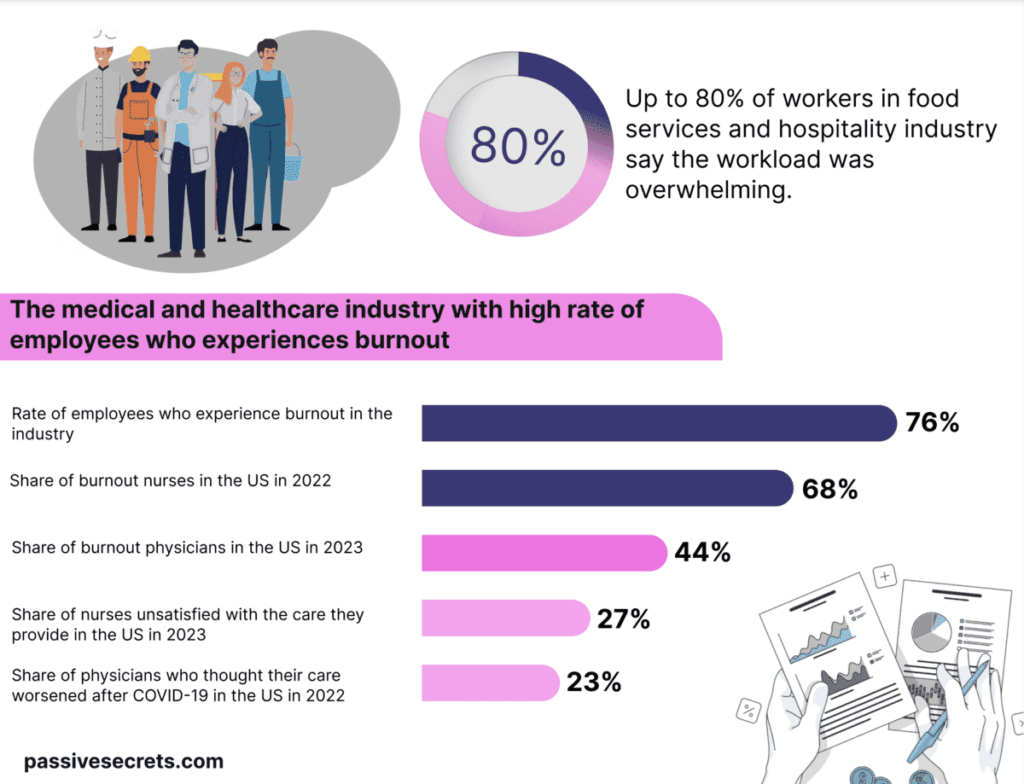
12. 58.5% of social workers say they considered changing their employers during the Covid-19. 40% said they considered changing their profession altogether. (source)
13. In a survey, about 72.5% of UK social workers confirmed they didn’t work from home. (source)
14. In the same U.K.-wide survey, 27.3% of respondents had low personal burnout, 42.6% had moderate burnout, and 30.1% experienced higher burnout. (source)
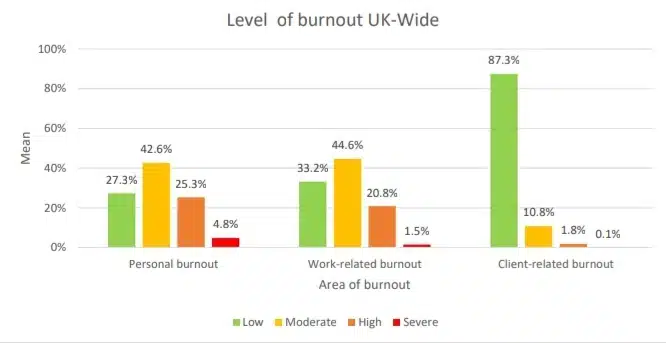
15. Respondents who felt that their service was overwhelmed by increased pressures experienced higher personal and work-related burnout than those who felt impacted but not significantly and those not affected. (source)
16. Emotional exhaustion, depersonalization, and low personal accomplishment and performance are part of the core dimensions of burnout symptoms. (source)
17. During the pandemic, the social workers with high levels of burnout were those who worked more on the front lines and lost more patients. These social workers also had fewer personal resources and inadequate support and experienced more sadness and anxiety. (source)
18. At the beginning of the COVID-19 pandemic, about 26.21% of social workers started experiencing PTSD. (source)
19. One year after the pandemic, 41.2% of surveyed social workers admit they suffer from severe burnout. (source)
20. 41% of social workers report feeling emotionally exhausted in the past 12 months. (source)
21. In a survey of German social workers, 23% admitted their job puts them in emotionally stressful situations. (source)
22. Also, 41% of social workers often experience emotional exhaustion. (source)
23. 58% of children’s social workers feel like their workload is too high. (source)
24. Additionally, 55% feel they are being asked to fulfil too many roles in their job. (source)
25. In an Australian survey, it is found that community services have reached a breaking point and face “a staffing crisis due to years of inadequate government funding.” 50% of frontline social workers and 60% of leaders said they feel under pressure and are emotionally drained from their work due to understaffing. (source)
26. 54% of social work organizations report that growing demand and complexity of need puts extra pressure. Due to this increased demand, these organizations experience staff burnout, affecting their main service. (source)
27. In a new report, 81% of social workers in domestic and family violence services admitted to having emotional exhaustion. (source)
28. 30% of social work organizations say they have referred people to other organizations due to lacking capacity. (source)
29. Underfunding is one of the primary reasons for social work burnout. This affects the ability of social work organizations to acquire and retain staff. (source)
30. A research study found that social workers who used their email more during the COVID-19 pandemic experienced higher burnout in personal achievement. (source)
31. Also, social workers with higher job satisfaction had lower burnout. (source)
32. More social workers (69.4%) feel more overwhelmed than health and social care workers. (source)
33. Unfortunately, post-pandemic, social workers are more likely to use substances, self-blame, and exhibit disengagement behaviours as a way of coping mechanisms from work. (source)
34. Research found that social workers’ quality of working life decreased throughout the pandemic. (source)
35. Frontline social workers’ turnover rate ranges between 30% and 50% yearly. (source)
36. The social work industry will grow by 12% between 2020 and 2030. This means that there will be an average of 78,300 job openings yearly. (source)
FAQs for Social Worker Burnout Statistics
1. What is Social Worker Burnout?
Social worker burnout happens when social workers experience emotional, mental, and physical exhaustion due to prolonged exposure to stressors in their work.
2. What are the Causes of Social Worker Burnout?
Various factors contribute to social worker burnout. They include:
- High workload
- Emotional demands like trauma, crises, and challenging situations clients face
- Insufficient resources and support, like short staffing and inadequate funding
- Inadequate training and supervision
- Lack of worker recognition
- Racial inequality and gender discrimination
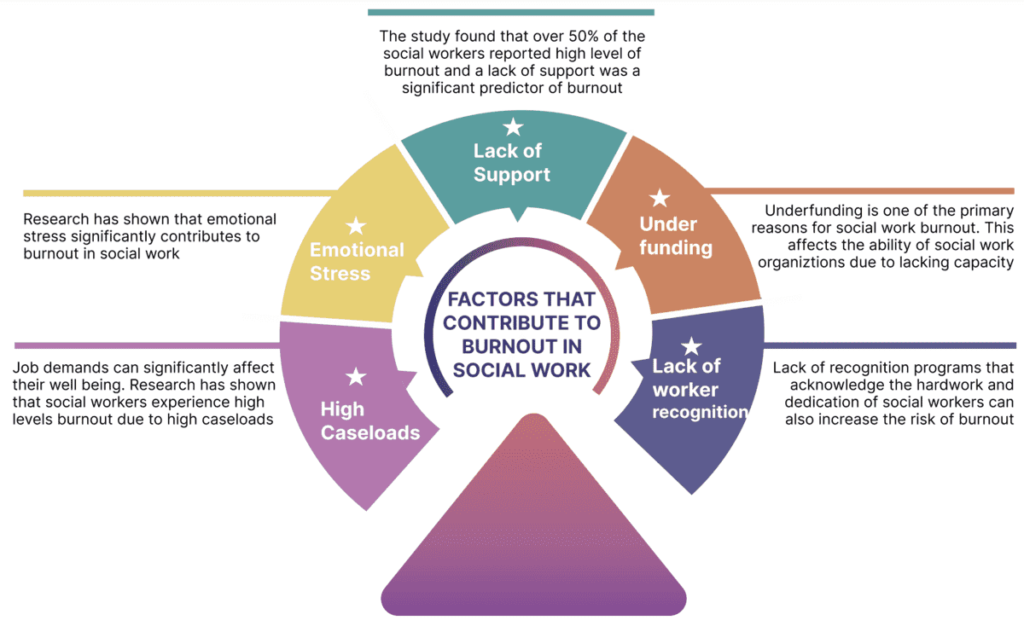
3. What is the Burnout Rate in Social Work?
From a recent survey, the average burnout rate for social workers ranges between 40% and 50%.
4. What are the Signs and Symptoms of Social Worker Burnout?
The most common and apparent symptoms of burnout are:
- Emotional exhaustion
- Reduced personal accomplishment
- Fatigue
- Lower job satisfaction
- Increased irritability
- Lack of sleep
5. Why are People Leaving Social Work?
Social work is a very demanding profession. Just like teachers, social workers often work under high pressure. This exposes them to experience anxiety, burnout, and distress frequently. The increased demand and stress of social work make workers desire to quit.
6. What is the Rate of Depression in Social Workers?
The rate of depression in social workers is 24%. This is slightly higher than those of other health workers during the Covid-19 period.
7. How can Social Workers Prevent Burnout?
Social workers should take time out of their busy schedules to rest and meditate. The constant exposure to trauma and stress increases the risk of burnout. Additionally, social workers should get enough exercise, drink water regularly, and keep a journal about how they really feel in different situations.
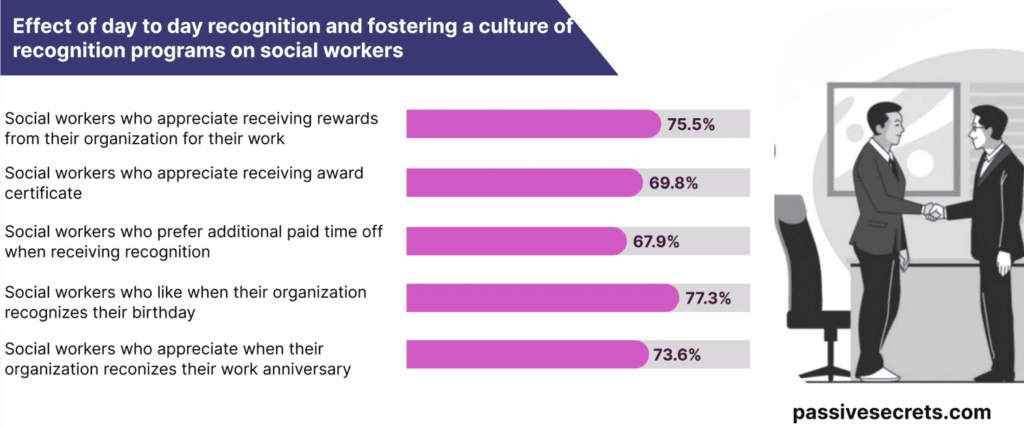
8. What are the Effects of Burnout on a Social Worker?
The primary effect of social worker burnout is high turnover rates. This means many social workers will quit when they reach that breaking point. Unfortunately, as many social workers are quitting, only very few are getting hired as replacements. This inadequacy reduces staffing capacity.
Conclusion
It is vital to know these social worker burnout statistics, especially if you are a social worker. You need to know the rates, causes, and effects of social worker burnout.
Social worker burnout is a prevalent and significant concern within the profession.
The demanding nature of the work, coupled with factors such as high caseloads, emotional intensity, and limited resources, contributes to the vulnerability of social workers.
You can use this social worker burnout statistics article as a resource for learning about social worker burnout.
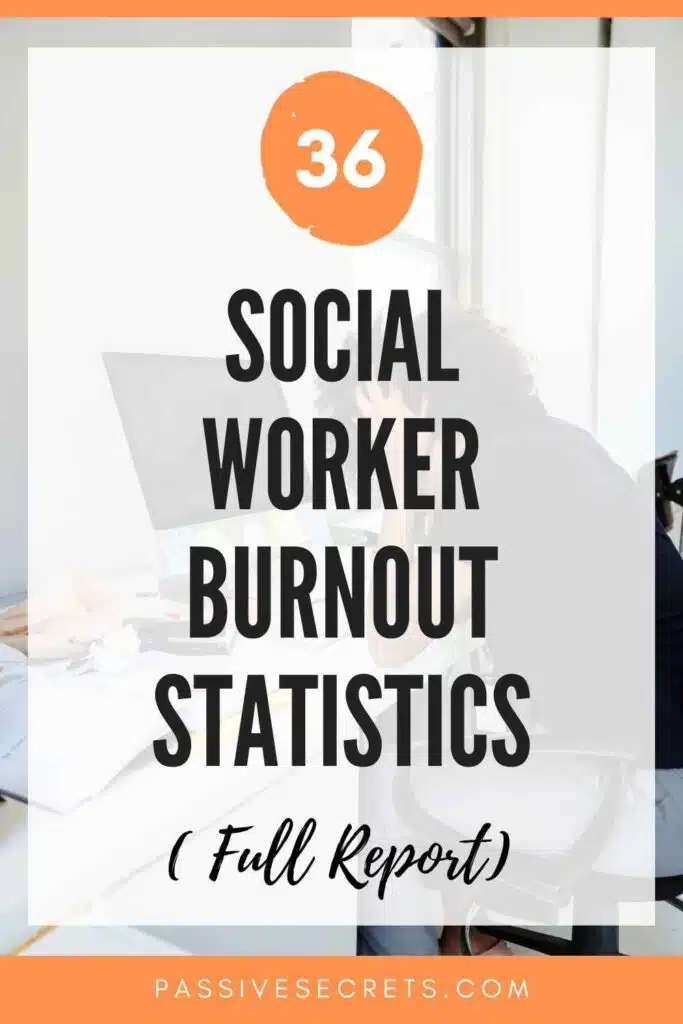
Recent Posts
- 80+ Employee Benefit Statistics: Insights and Trends
- The Most Important Wealth Management Statistics You Can’t Afford to Ignore
- Enterprise Data Management: Essential Statistics and Emerging Trends
- 93 Talent Management Statistics to Help You
- Top Reputation Management Statistics and Trends to Improve Your Brand
- 100 Business Process Outsourcing Statistics & Facts
- Top HR Outsourcing Statistics and Trends Every Business Must Know
- The Top Outsourcing Statistics You Shouldn’t Ignore
- 47+ Shocking 4-day Work Week Statistics To Know
- 105+ Supply Chain Statistics & Facts You Can’t Ignore
- 50+ Interesting Employer Branding Statistics And Trends
- Job Seekers Statistics: Unemployment Rates, Preferences, Challenges
- 95 Interesting Job Interview Statistics and Huge Trends To Know
- 60+ Helpful Change Management Statistics & Facts
- 65+ Employee Performance Management Statistics & Trends
- Workforce Management Statistics: Trends, Insights, & Opportunities
- 73 Revealing Workplace Distraction Statistics
- Workplace Romance Statistics: How Common Is Workplace Romance?
- 40+ Top Workplace Conflict Statistics You Should Know
- The State of Workplace Communication: Key Statistics and Trends
- 55 Workplace Collaboration & Teamwork Statistics

